News
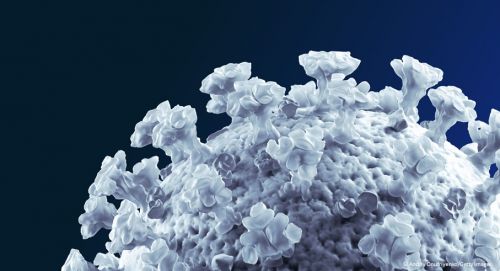
23/03/2020
ICN2 and CReSA at the forefront against COVID-19
ICN2 and CReSA at the forefront against COVID-19
If a first lesson can be already drawn from the COVID-19 epidemic we are facing, is that research is crucial to give both the scientific expertise governments need and solutions to cure or prevent the disease.
In that context, two research centers from the UAB Campus, our neighbor and partner, are on the front line of this great challenge: the Catalan Institute of Nanoscience and Nanotechnology (ICN2) and the Animal Health Research Center (CReSA).
Among the 17 research projects awarded this month by the European Commission after a special call to focus research efforts on the diagnosis and treatment of the COVID-19 disease caused by the SARS-CoV-2 coronavirus, one is led by the ICN2. This project called CONVAT aims at diagnosing the disease in 30 minutes directly from a patient's sample.
CONVAT is led and coordinated by Prof. Laura M. Lechuga, CSIC Research Professor at the ICN2. The device that will be developed is based on optical biosensor nanotechnology will also allow the analysis of different types of coronavirus present in reservoir animals, such as bats, to monitor the evolution of these viruses and prevent future infectious outbreaks in humans. The project has a duration of two years, however, since it is based on previous know-how, results are expected to be produced in less than a year.
Regarding the CReSA laboratory from the Institute for Agri-Food Technology and Research (IRTA), its coronavirus line of research has begun working with scientists at the National Laboratory of Galveston and the University of Texas Medical Center of the United States of America to find out more about the origin and evolution of the disease.
Just days after the Wuhan’s new coronavirus outbreak, the virus’s gene sequence was identified and published by various research centers around the world. With this information, CReSA researchers and their colleagues have identified the target protein and its specific region that would be key to work on a possible vaccine. The next step to this study already published is to check the effectiveness of these molecules in the lab to find out if they would be good candidates for a vaccine.
Congratulations and good luck!
In that context, two research centers from the UAB Campus, our neighbor and partner, are on the front line of this great challenge: the Catalan Institute of Nanoscience and Nanotechnology (ICN2) and the Animal Health Research Center (CReSA).
Among the 17 research projects awarded this month by the European Commission after a special call to focus research efforts on the diagnosis and treatment of the COVID-19 disease caused by the SARS-CoV-2 coronavirus, one is led by the ICN2. This project called CONVAT aims at diagnosing the disease in 30 minutes directly from a patient's sample.
CONVAT is led and coordinated by Prof. Laura M. Lechuga, CSIC Research Professor at the ICN2. The device that will be developed is based on optical biosensor nanotechnology will also allow the analysis of different types of coronavirus present in reservoir animals, such as bats, to monitor the evolution of these viruses and prevent future infectious outbreaks in humans. The project has a duration of two years, however, since it is based on previous know-how, results are expected to be produced in less than a year.
Regarding the CReSA laboratory from the Institute for Agri-Food Technology and Research (IRTA), its coronavirus line of research has begun working with scientists at the National Laboratory of Galveston and the University of Texas Medical Center of the United States of America to find out more about the origin and evolution of the disease.
Just days after the Wuhan’s new coronavirus outbreak, the virus’s gene sequence was identified and published by various research centers around the world. With this information, CReSA researchers and their colleagues have identified the target protein and its specific region that would be key to work on a possible vaccine. The next step to this study already published is to check the effectiveness of these molecules in the lab to find out if they would be good candidates for a vaccine.
Congratulations and good luck!
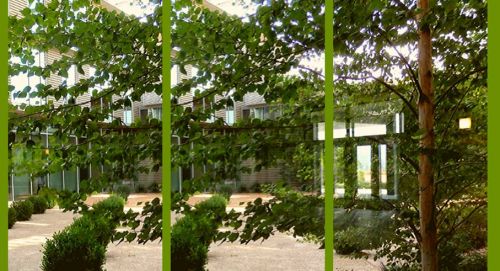
10/03/2020
Barcelona Synchrotron Park publishes a guide to promote biodiversity in its buildings
Barcelona Synchrotron Park publishes a guide to promote biodiversity in its buildings
Creating economic wealth at the service of society and at the same time preserving the natural capital, that is, the economic value of the services offered for free by nature, is part of the challenge to achieve a necessarily sustainable growth and Barcelona Synchrotron Park (BSP) does its part.
Indeed, the Park, awarded by the EU Business & Biodiversity label, has already carried out different actions in this field: permeability of road infrastructures, restoration of natural habitats, creation of shelters to promote birds and other fauna to control pests, naturalised drainage systems (green ditches) or agreements with farmers to promote biodiversity-suited dry croplands in the green corridor and on undeveloped plots.
The BSP’s global action program designed to enhance its green infrastructure and support biodiversity can be downloaded here.
In this program, Action 8 corresponds to promote green infrastructure in buildings: with the technical support of Minuartia, BSP has prepared and published a guide (in Catalan) for the companies already established in the park and new companies that want to set up in.
The guide (in Catalan) includes a set of actions, measures and good practices to promote the conservation of biodiversity and the minimization of the use of resources. The proposed measures are structured in three thematic blocks: Gardening practices to favor wild fauna and flora, good maintenance practices and application of nature-based solutions. Each includes a brief description, practical advice, links to relevant information and reference examples. Together, it represents a very useful tool to encourage and facilitate companies the process of implementing actions to favor biodiversity and green infrastructure.
Indeed, the Park, awarded by the EU Business & Biodiversity label, has already carried out different actions in this field: permeability of road infrastructures, restoration of natural habitats, creation of shelters to promote birds and other fauna to control pests, naturalised drainage systems (green ditches) or agreements with farmers to promote biodiversity-suited dry croplands in the green corridor and on undeveloped plots.
The BSP’s global action program designed to enhance its green infrastructure and support biodiversity can be downloaded here.
In this program, Action 8 corresponds to promote green infrastructure in buildings: with the technical support of Minuartia, BSP has prepared and published a guide (in Catalan) for the companies already established in the park and new companies that want to set up in.
The guide (in Catalan) includes a set of actions, measures and good practices to promote the conservation of biodiversity and the minimization of the use of resources. The proposed measures are structured in three thematic blocks: Gardening practices to favor wild fauna and flora, good maintenance practices and application of nature-based solutions. Each includes a brief description, practical advice, links to relevant information and reference examples. Together, it represents a very useful tool to encourage and facilitate companies the process of implementing actions to favor biodiversity and green infrastructure.
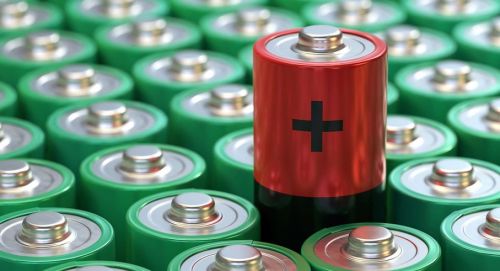
27/02/2020
Batteries of the future are investigated in the ALBA synchrotron
Batteries of the future are investigated in the ALBA synchrotron
The Nobel Prize in Chemistry 2019 was awarded jointly to John B. Goodenough, M. Stanley Whittingham and Akira Yoshino for the development of lithium-ion batteries: in words of the Nobel Committee “they have created a rechargeable world”.
The battery research community involves today thousands of researchers all around the world, including chemists, physicists, materials scientists and engineers cooperating to push this technology forward to increase performance and sustainability and also unravel new battery chemistries beyond Li-ion.
The Institute of Materials Science of Barcelona (ICMAB) located on the campus of our neighbor and partner UAB University is among the world research centers involved in that key field of research with the Inorganic Materials for Battery Applications research group led by Prof. M. Rosa Palacín.
In a webinar organized on January 23 by Secpho, a cluster of technological innovation that brings together companies, technology centers and research groups, Ashley Black from the Palacín’s group explained the use of synchrotron radiation in battery research. His talk is now online (a 23-minute video in English) and offers a good opportunity to see how powerful a synchrotron is in providing unique information about materials.
Among the different examples presented by Ashley Black, let us mention two results obtained with ALBA synchrotron on prospective batteries based on sodium or calcium instead of lithium: the study of reaction mechanisms using in situ cells in the pre-competitive technology of sodium-ion batteries (MSPD and CLAESS ALBA beam lines) or the localization of calcium by tomography reconstruction thanks to the transmission X-ray microscope of the MISTRAL ALBA beam line in the case of calcium-ion batteries.
The battery research community involves today thousands of researchers all around the world, including chemists, physicists, materials scientists and engineers cooperating to push this technology forward to increase performance and sustainability and also unravel new battery chemistries beyond Li-ion.
The Institute of Materials Science of Barcelona (ICMAB) located on the campus of our neighbor and partner UAB University is among the world research centers involved in that key field of research with the Inorganic Materials for Battery Applications research group led by Prof. M. Rosa Palacín.
In a webinar organized on January 23 by Secpho, a cluster of technological innovation that brings together companies, technology centers and research groups, Ashley Black from the Palacín’s group explained the use of synchrotron radiation in battery research. His talk is now online (a 23-minute video in English) and offers a good opportunity to see how powerful a synchrotron is in providing unique information about materials.
Among the different examples presented by Ashley Black, let us mention two results obtained with ALBA synchrotron on prospective batteries based on sodium or calcium instead of lithium: the study of reaction mechanisms using in situ cells in the pre-competitive technology of sodium-ion batteries (MSPD and CLAESS ALBA beam lines) or the localization of calcium by tomography reconstruction thanks to the transmission X-ray microscope of the MISTRAL ALBA beam line in the case of calcium-ion batteries.
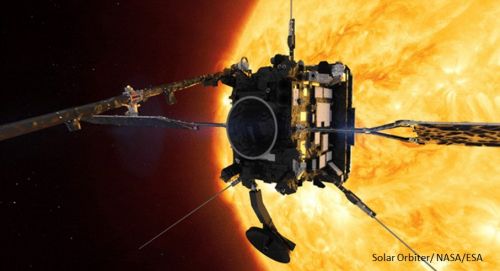
10/02/2020
With Solar Orbiter, SENER approaches a star
With Solar Orbiter, SENER approaches a star
This morning, the European Space Agency (ESA) Solar Orbiter mission, in partnership with NASA, took off from Cap Canaveral (USA). The satellite is now travelling towards the sun in order to take pictures of its north and south poles for the first time.
In order to forecast solar wind bursts that sometimes violently collide the earth and can disrupt our communication systems (and even jeopardise the lives of astronauts), an accurate model of the local magnetic field of our star is required: the images of the poles taken by Solar Orbiter from its privileged location out of the ecliptic plane will improve the existing models.
But the design of such a satellite is challenging: for instance, working temperatures of the Solar Orbiter external equipment will reach 400ºC at the closest distance from the sun and -100ºC at the largest one…
SENER is involved in this scientific and technological adventure: the multinational engineering and technology group (2,300 people in 18 countries with Catalan headquarters set up in the Barcelona Synchrotron Park with a strong activity in the aerospace sector) designed different elements of the satellite. By the way, this mission is the largest space contract ever awarded to SENER, which worked in parallel on five different contracts, such as the antennae subsystem or a retractable boom carrying four of the ten instruments.
More information about the SENER’s contribution: here
In order to forecast solar wind bursts that sometimes violently collide the earth and can disrupt our communication systems (and even jeopardise the lives of astronauts), an accurate model of the local magnetic field of our star is required: the images of the poles taken by Solar Orbiter from its privileged location out of the ecliptic plane will improve the existing models.
But the design of such a satellite is challenging: for instance, working temperatures of the Solar Orbiter external equipment will reach 400ºC at the closest distance from the sun and -100ºC at the largest one…
SENER is involved in this scientific and technological adventure: the multinational engineering and technology group (2,300 people in 18 countries with Catalan headquarters set up in the Barcelona Synchrotron Park with a strong activity in the aerospace sector) designed different elements of the satellite. By the way, this mission is the largest space contract ever awarded to SENER, which worked in parallel on five different contracts, such as the antennae subsystem or a retractable boom carrying four of the ten instruments.
More information about the SENER’s contribution: here
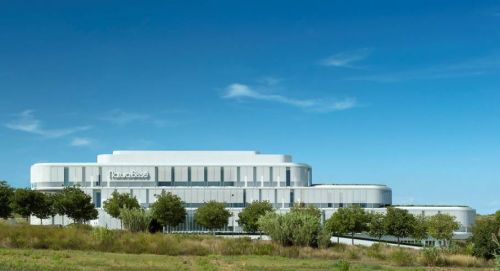
27/01/2020
Welcome, Natura Bissé!
Welcome, Natura Bissé!
Since last summer, part of the staff of Natura Bissé, the family business founded in 1979 by Barcelona businessman Ricardo Fisas, leader in innovation and development of high-end cosmetics, already occupies the new headquarters of the company built in the Barcelona Synchrotron Park. Very soon, with the start-up of the production plant, some 200 people will work there.
The building designed by TDB Architecture is a green construction energetically efficient with natural light on every floor including the basement. The 13,500 sqm headquarter hosts the research center, the business and logistics departments, the production plant and an area specially devoted to training and innovation. The corresponding investment is € 15 million.
Natura Bissé is largely present abroad with subsidiaries in the United States, Mexico, the United Kingdom and the United Arab Emirates, and 2,000 points of sale in 35 countries. By the way, the firm closed 2018 with a € 70 million turnover, over three quarters of which (78%) were made abroad, especially in the United States (27%), Europe (22%), China (18%) and the important emerging markets of the Middle East and the Asia-Pacific area.
With a business based on the added value of R&D (7% of the 2016 turnover were invested in R&D), the arrival at Natura Bissé Park, 40 years after its birth, is great news for the Barcelona Synchrotron Park. Welcome!
The building designed by TDB Architecture is a green construction energetically efficient with natural light on every floor including the basement. The 13,500 sqm headquarter hosts the research center, the business and logistics departments, the production plant and an area specially devoted to training and innovation. The corresponding investment is € 15 million.
Natura Bissé is largely present abroad with subsidiaries in the United States, Mexico, the United Kingdom and the United Arab Emirates, and 2,000 points of sale in 35 countries. By the way, the firm closed 2018 with a € 70 million turnover, over three quarters of which (78%) were made abroad, especially in the United States (27%), Europe (22%), China (18%) and the important emerging markets of the Middle East and the Asia-Pacific area.
With a business based on the added value of R&D (7% of the 2016 turnover were invested in R&D), the arrival at Natura Bissé Park, 40 years after its birth, is great news for the Barcelona Synchrotron Park. Welcome!
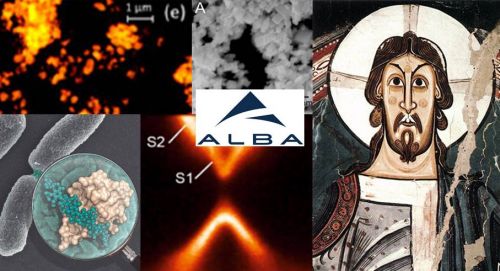
14/01/2020
The Alba Synchrotron has lots of tricks up its sleeve!
The Alba Synchrotron has lots of tricks up its sleeve!
News released last month by the Alba Synchrotron inform us about some experiments carried out in fields as different as cultural heritage, energy or life sciences, using no less than 6 of the different beam lines available at Alba. Let’s take a look at this diversity of scientific researches and experimental approaches carried out at our synchrotron!
Historically, Aerinite is a blue pigment used in many Romanesque paintings of the Pyrenean zone between the XI-XIV centuries. Researchers from the ICMAB-CSIC and Alba have identified for the first time brown aerinite. The experiment was carried out at the MSPD beamline.
Other researchers from ICMAB-CSIC and Alba, jointly with the University of Bologna and the Helmholtz Institute Ulm used the CLAESS and MISTRAL beamlines to unveil the central role of manganese in the limited cycle-life of lithium-ion batteries.
For its part, a research group from the Institute of Energy Technologies (INTE) and the Department of Chemical Engineering — both from the Universitat Politècnica de Catalunya — is working on catalysts to get more effective hydrogen production reactions. Experiments carried out at the CIRCE beamline have allowed the researchers to determine the best support for the nanoparticles used in the process.
In another domain, the high division rate of bacteria is one of their best weapons against antibiotics. A team from the Rocasolano Institute of Physical Chemistry (IQFR-CSIC) in Madrid, Spain, the University of Notre Dame in the United States and the National Centre for Biotechnology (CNB-CSIC) in Madrid, Spain, has revealed the structure of a key machinery in the process of bacterial division thanks to the X-ray crystallography technique of the XALOC beamline.
Last but not least, a large group of chemists, theoretical and experimental physicists from Germany, Russia, Spain and Azerbaijan has developed the first intrinsically magnetic topological material. This material is very promising for the development of antiferromagnetic spintronics, 2D magnetism and quantum transport without the need for strong external magnetic fields. Part of the experiments has been performed at the BOREAS beamline.
To read more about these experiments.
Historically, Aerinite is a blue pigment used in many Romanesque paintings of the Pyrenean zone between the XI-XIV centuries. Researchers from the ICMAB-CSIC and Alba have identified for the first time brown aerinite. The experiment was carried out at the MSPD beamline.
Other researchers from ICMAB-CSIC and Alba, jointly with the University of Bologna and the Helmholtz Institute Ulm used the CLAESS and MISTRAL beamlines to unveil the central role of manganese in the limited cycle-life of lithium-ion batteries.
For its part, a research group from the Institute of Energy Technologies (INTE) and the Department of Chemical Engineering — both from the Universitat Politècnica de Catalunya — is working on catalysts to get more effective hydrogen production reactions. Experiments carried out at the CIRCE beamline have allowed the researchers to determine the best support for the nanoparticles used in the process.
In another domain, the high division rate of bacteria is one of their best weapons against antibiotics. A team from the Rocasolano Institute of Physical Chemistry (IQFR-CSIC) in Madrid, Spain, the University of Notre Dame in the United States and the National Centre for Biotechnology (CNB-CSIC) in Madrid, Spain, has revealed the structure of a key machinery in the process of bacterial division thanks to the X-ray crystallography technique of the XALOC beamline.
Last but not least, a large group of chemists, theoretical and experimental physicists from Germany, Russia, Spain and Azerbaijan has developed the first intrinsically magnetic topological material. This material is very promising for the development of antiferromagnetic spintronics, 2D magnetism and quantum transport without the need for strong external magnetic fields. Part of the experiments has been performed at the BOREAS beamline.
To read more about these experiments.









